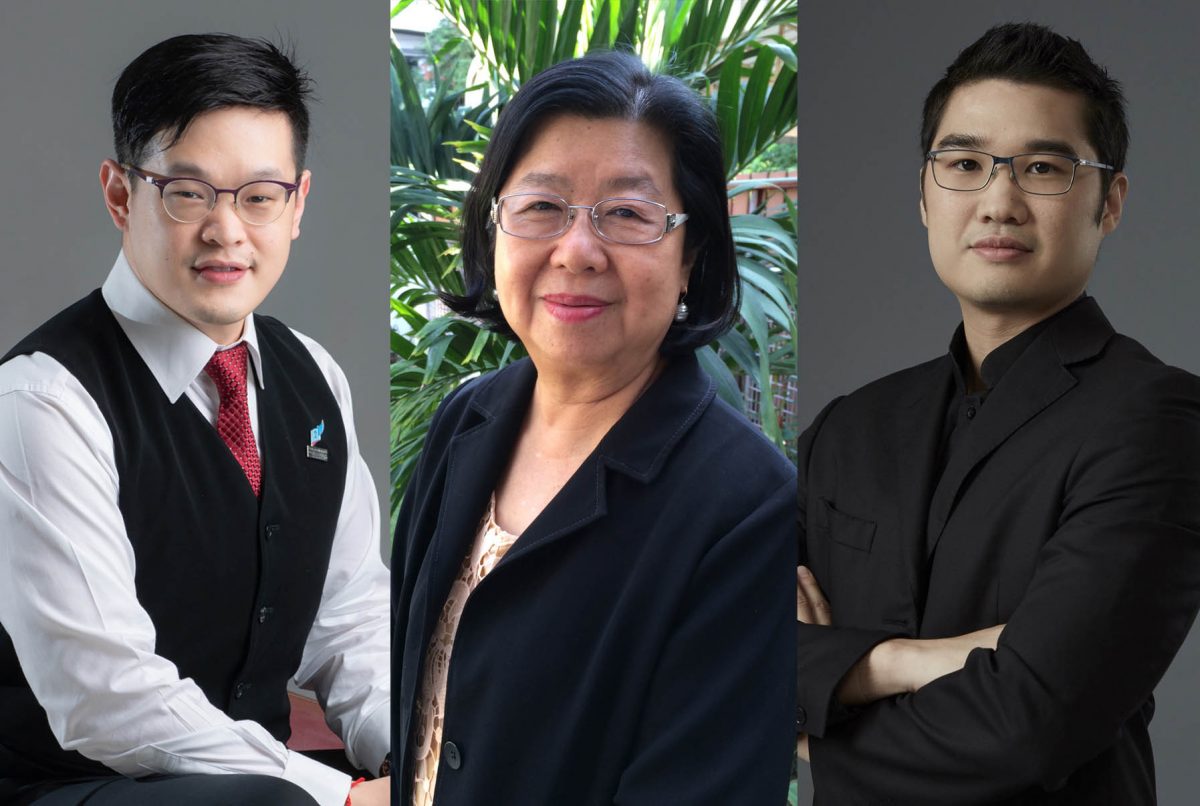
Chula reveals a new concept to encourage Thais to actively embrace anti-corruption
Chula reveals a new concept to encourage Thais to actively embrace anti-corruption efforts Marketing strategy applied in creating a model to build citizen action against corruption.
A team of researchers at Chulalongkorn University is introducing its research on a model known as “The right communications strategy for Khon Thai 4.0 (Thai people) to counter corruption”. This new contribution towards encouraging citizens to participate in anti-corruption efforts has been released in parallel with an indicator to evaluate the anti-corruption levels of individuals.
For more than a year, the team of lecturers at the Faculty of Economics and Chulalongkorn Business School (CBS), Chulalongkorn University, conducted research on the topic “Applied Marketing for Clustering and Encouraging Different Anti-corruption Behaviours”. The research was supported by the National Research Council of Thailand through the Spearhead Strategic Plan on Social Aspects Khon Thai 4.0 (Thai People 4.0), chaired by Prof. Dr. Mingsan Khaosaard. The research team was made up of Asst. Prof. Dr. Torplus Yomnak, Dr. Apichart Kanarattanavong, Asst. Prof. Dr. Ake Pattaratanakun, Asst. Prof. Dr. Thanee Chaiwat and a team from Hand Social Enterprise Co., Ltd.
Asst. Prof. Dr. Torplus, a lecturer at the Faculty of Economics, Chulalongkorn University and head of the research team, said that up until now, corruption studies had adopted an issue-centric rather than an actor-centric approach while anti-corruption policies and mechanisms had followed the top-down model. Because the policies were not based on core problems, the anti-corruption agencies had found themselves armed with ineffective tools to tackle the problems, resulting in lower social participation.
The research team therefore focused its efforts on studying the civil society sector. Marketing science was applied to segment target groups who wish to fight against corruption and identify the different types of groups – the latent classes – in much the same way as marketing experts identify target customers. The segmentation of target groups led to the design of a communications strategy that effectively encourages and appeals to the people to participate in anti-corruption efforts.
“This is the first time an attempt has been made to change the anti-corruption research methodology based on social, cultural and psychological factors. In the past, researchers used demographic factors such as career, gender, age and income, rather than segmentation of people with different lifestyles,” Dr. Torplus said.
Existing civil society networks, among them the anti-corruption watchdog under the Anti-corruption Organization of Thailand (ACT) and the Isranews Agency, have gained strength in recent years, and show that citizens are the most important mechanism to tackle fraud and corruption. The question is: how can these civil society networks be rapidly expanded?
The research team has answered this question by developing knowledge in such a way as to promote citizen participation. The target groups are encouraged to become active citizens and citizen reporters who investigate the truth. This new model will reshape the structural level and provide better results.
The research team also expects that the new knowledge will serve as a guideline to enhance the efficiency of the complaint mechanisms and good governance of state agencies including the Comptroller General’s Department, the Office of Public Sector Anti-Corruption Commission and the State Audit Office of Thailand.
Asst. Prof. Dr. Ake Pattaratanakun, a lecturer at Chulalongkorn Business School and a member of the research team, explained that the application of marketing science makes this the first study to segment the anti-corruption groups and their different latent classes.
The first study in the 3-stage process revealed several interesting results, including identifying 6 latent classes, namely personal norms, chances of involvement in corruption, acceptance of power inequality, group adherence, avoidance of uncertainty, and masculinity.
For the second study, the team surveyed 719 samples from all regions of the country. As a result, they were able to classify the subjects into 4 groups: The Frontline (citizens who believe they can solve the problems by their actions); The Exemplar (citizens who want to counter corruption, but don’t participate in suppression); The Mass (citizens who don’t like corruption, but don’t participate in anti-corruption efforts); and The Individualist (citizens who don’t pay attention to nor participate in anti-corruption efforts).
In addition, the team created an indicator to evaluate the level of anti-corruption efforts based on 4 clear dimensions: awareness of problems, prevention, persistence and suppression. This indicator will become a tool for future researchers to further develop knowledge about anti-corruption efforts.
Dr. Ake pointed out that the first and second studies showed that the approach might not be appropriate if the research identified anti-corruption citizens as the same group due to their different latent classes.
The last study, however, identified two interesting latent classes, personal norms and masculinity, which were selected for a trial using gamification methods. It was found that there is a direct relationship between personal norms and anti-corruption. The citizens who have low personal norms will also have a low anti-corruption bias. Thus, efforts to provide knowledge and encourage awareness to increase social norms will promote anti-corruption efforts.
Citizens with high masculinity will also have a low anti-corruption bias. A campaign designed to encourage awareness and attitude about gender equality in terms of capability and acceptance of career and duties, among others, could be a means to promote anti-corruption thinking.
Dr. Ake said that this research will enable policy makers to use anti-corruption budget more efficiently. The concerned government agencies and civil societies can prioritize their budget to focus on the target groups whose anti-corruption behavior can be encouraged more easily to than the others like the Frontline and the Exemplar.
Moreover, the segmentation of target groups will shift the communications strategy in boosting citizen participation in anti-corruption efforts from mass to target marketing and change the communications method from a Push Strategy to a long-term Pull Strategy.
Prof. Dr. Mingsan Khaosaard, Chairman of the Spearhead Strategic Plan on Social Aspects: Khon Thai 4.0, which supported the research, said that corruption is one of the crucial factors affecting happiness and thus a goal of Khon Thai 4.0.
In the past, marketing science has never been applied to anti-corruption communication. This research is thus a new contribution to fostering understanding and encouraging citizen participation in anti-corruption actions.
“In addition to creating the right communications strategy and appealing to the target groups, we have to seek partners in fighting against corruption. We have to expand the network of anti-corruption advocates through an empowering platform because Khon Thai 4.0 is made up of people who live with platforms.”
Dr. Mingsan suggested that social media including YouTube, TikTok, Twitter or Facebook will play a key role in promoting the new concept and model among the target groups. It is seen as an effective medium to expand the network of anti-corruption citizens at a low cost.
Meanwhile, the state agencies concerned should change their communications strategy from a hard-sell to lifestyle marketing such as through campaigns to encourage awareness and change attitudes on gender equality.
Source: Maxima Consultants
